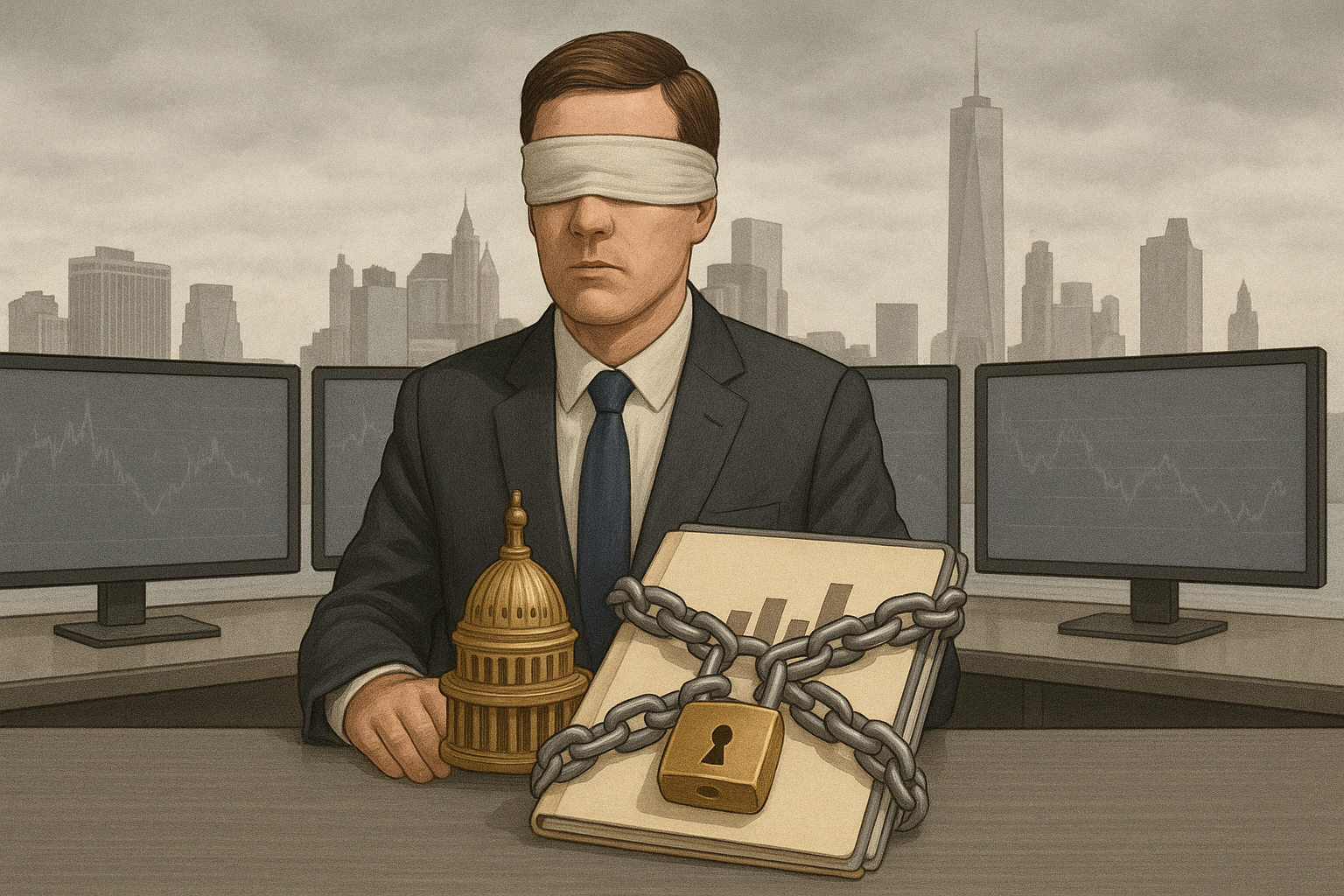The Labor Department just dropped a bombshell on Wall Street – if Congress can't get its act together to fund the government, Friday's jobs report will become another hostage in Washington's perpetual budget drama.
I've watched this shutdown movie before. It typically follows a predictable script: threats, deadlines, finger-pointing, shutdown, market jitters, eventual resolution, then collective amnesia until the next fiscal cliff. But this particular standoff has a twist I find especially fascinating – an information blackout that could leave traders temporarily blindfolded.
The monthly jobs report isn't just any economic indicator. It's the Super Bowl of market data. Trading desks worldwide prepare for its 8:30 AM release with almost religious devotion. Economists stay up late tweaking models, strategists draft multiple versions of reaction notes, and traders position themselves for the inevitable market convulsions that follow.
But what happens when the data simply... doesn't come?
The Great Information Vacuum
Look, markets can handle bad news. They can process good news. What they absolutely cannot stomach is no news – especially when they were counting on it.
This creates what market veterans call an "information vacuum premium." (Okay, I just made up that term, but it fits.) When expected data disappears, uncertainty doesn't just remain constant – it actually expands to fill the void.
The truly weird part? The information still exists. Those Labor Department statisticians have already collected the numbers. The data sits there, compiled and analyzed, but locked away from public view like some economic state secret.
Some government officials will know exactly how the employment landscape looks while hedge fund managers and institutional investors – who base trillion-dollar decisions on this stuff – are left squinting at shadows.
The Alternative Data Gold Rush
Nature abhors a vacuum. Markets? Even more so.
If the shutdown happens (still an "if" as I write this), alternative data sources will suddenly become the belle of the economic ball. ADP's private payroll report – usually considered the less authoritative cousin to the official numbers – will get an immediate promotion to interim benchmark. Economic consultancies will blast out their estimates with renewed confidence. LinkedIn hiring data, credit card spending patterns, even Google search trends for "unemployment benefits" – all will be scrutinized with unprecedented intensity.
The irony is palpable. In trying to prevent volatility by withholding potentially market-moving information, the shutdown might actually create more volatility as traders chase less reliable signals through increasingly noisy channels.
I spoke with a veteran rates trader yesterday who put it bluntly: "It's like taking away everyone's radar during a storm. We'll still fly the plane – we'll just be guessing a lot more."
The Data Dam Break
Then there's the aftermath question. What happens when the shutdown eventually ends and months of economic reports flood the zone at once?
Having covered previous shutdowns, I can tell you it's not pretty. Markets digest information most efficiently when it arrives in regular, predictable intervals – not when it comes crashing down like a tidal wave of economic indicators.
It's a bit like fasting for a week then trying to eat seven days' worth of meals in one sitting. Economic narratives become jumpy and disjointed rather than flowing naturally.
During the 2019 shutdown, the Commerce Department held back several key reports. When they finally released them, traders had to process multiple crosscurrents simultaneously, creating volatility spikes that might have been avoided under normal circumstances.
Meanwhile, in Other Crisis News...
• The SEC says it will reduce operations during a shutdown, though securities markets remain open and monitored. (Heaven forbid capitalism take a day off while democracy sorts itself out.)
• Remember when the debt ceiling had everyone in a panic? That crisis feels almost quaint now, doesn't it?
• The 10-year Treasury yield briefly touched 4.6% yesterday – continuing to push higher despite all this uncertainty. The "higher for longer" interest rate story seems determined to outlast both functional government and investor optimism.
This whole situation presents a fascinating natural experiment in financial markets. How much do these official reports actually matter? Could markets function just fine with alternative indicators? Or is there something uniquely valuable about the coordinated moment of focus that official releases provide?
We might soon find out. Unless, of course, Congress pulls a last-minute rabbit from its hat and passes a funding bill.
I wouldn't bet my retirement account on that happening, though. Not with this Congress.
